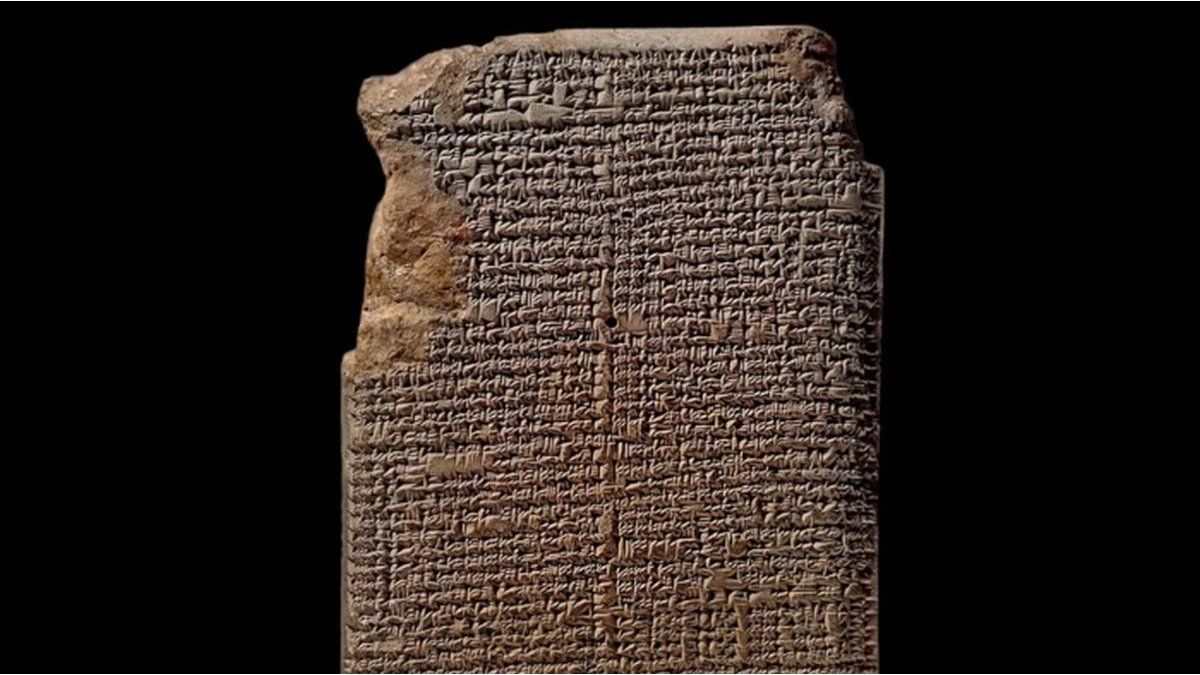A group of archaeologists from Iraq managed to decipher what the inscriptions on the 4,000-year-old clay tablets displayed in the British Museum meanThe interpretation of these scriptures was achieved after years of research.
Relics with catastrophic warning messages They were found by European archaeologists during excavations in Sipparan ancient Babylonian city located on the banks of the Euphrates River, between the years 1992 and 1914.
Influential Enigmas
Research on these tablets was significantly advanced by the work of Professor Andrew George from the School of Oriental and African Studies at the University of London, and Independent researcher Junko Taniguchispecialized in the Babylonian period.
babylonian tablet 2.jpg
The predictions are associated with a text that organizes the omens of the lunar eclipse.
Courtesy Trustees of the British Museum
The inscriptions on these tablets reveal a series of apocalyptic warnings. Experts have determined that they were Prepared by astrologers of the Babylonian court, who had the ability to interpret lunar eclipses and other astronomical phenomena.
In the historical context of the region, Astrology and divination played a crucial role in the decision-making of Babylonian kings.influencing their government policies and strategies.
What do the 4,000-year-old tablets reveal?
The messages warn of disasters such as fires, floods and faminesOne of the most disturbing inscriptions predicts that “a great king will die, his throne will crumble, his territory will become desolate, his water sources will dry up and an army will succumb in battle.”
The text also mentions that “extreme hunger will be experienced, people will exchange their children for money, and there will be a decrease in population.”
“The rains are also expected to stop and rivers will rise, leading to severe food shortages.”
The origin of predictions
Researchers have found that these predictions are associated with a text that organizes the omens of the lunar eclipse based on the time of night, the astronomical movements and their duration. Through these inscriptions, astrologers issued warnings about possible future calamities. However, at that time, It was believed that through specific rituals these disasters could be mitigated or avoided.
The four tablets were thought to be able to predict the days when eclipses would occur, which was crucial to the cultural and religious beliefs of ancient Babylon.
Archaeological background
In 2021, the oldest example of applied geometry was found printed on a 3,700-year-old ancient Babylonian clay tablet.. It was a cadastral document prepared by an expert to resolve a dispute regarding the division of a piece of land, in which the right angles were drawn using the Pythagorean triple systemmore than a thousand years before it was formulated by the Greeks.
The discovery, kept in the Istanbul Archaeological Museum, was made Daniel Mansfielda mathematician at the University of New South Wales (Australia) who published the results of the study in the journal Foundations of Science.
The clay tablet, found in Iraq in 1894 and marked with the initials Si.427“It is the only known example of a cadastral document from the Old Babylonian period. In this case it tells us the legal and geometric details of a field that was divided after part of it was sold,” Mansfield explained.
“With this tablet we can really see for the first time why the Babylonians were interested in geometry: It was used to draw boundaries in a precise manner“, he added.
MATHEMATICAL CLAY TABLE.jpg

Ancient clay tablet that revolutionized mathematics.
Source: Ambito




